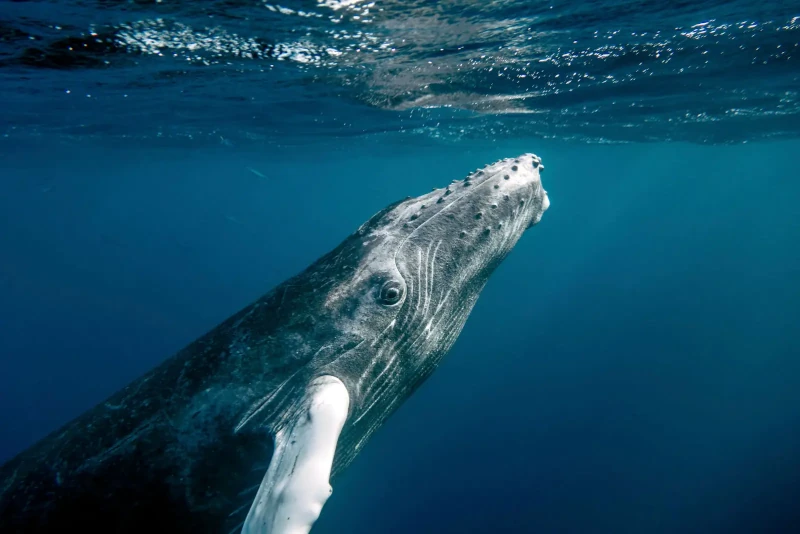
Humpback Whale Facts
- The attention-grabbing term of Humpback Whale serves as the best known common name for this true marvel of the marine regions of the world. The marine wondeer has other titles, of course, though these only represent the non-english language versions of the same.
- Some of these tags include Kohola in Hawaiian, in which culture they’re historically considered extremely sacred. Baleine à bosse, meanwhile, serves as the French term for the natural marvel. In Portuguese it’s called Jubarte, while the Spanish name is Yubarta, to name a few.
- Inside of the scientific community, however, it’s perhaps better known by its technical moniker. That appellation, though, like most such, remains quite difficult for the layperson to pronounce. That’s because it holds the official epithet of Megaptera novaeangliae.
- The magnificent mammal received that difficult designation due to the efforts of Georg Heinrich Borowski. That respected German zoologist wasn’t the first to identify it, but assigned it the name it holds now. He accomplished scientifically noteworthy deed in the year 1781.
- Lamentably, humans once hunted the majestic Humpback Whale nearly to the brink of extinction. In the 1960’s, its population fell to only around 5,000. Thankfully, officials put preservation efforts in place, and it now numbers around an estimated 135,000 individuals.
- Due to this marked improvement, the IUCN currently lists the creature as Least Concern on its published Red List. It nevertheless still faces numerous threats to its existence. Like most species today, these include the related perils of habitat loss and climate change.
Related Articles
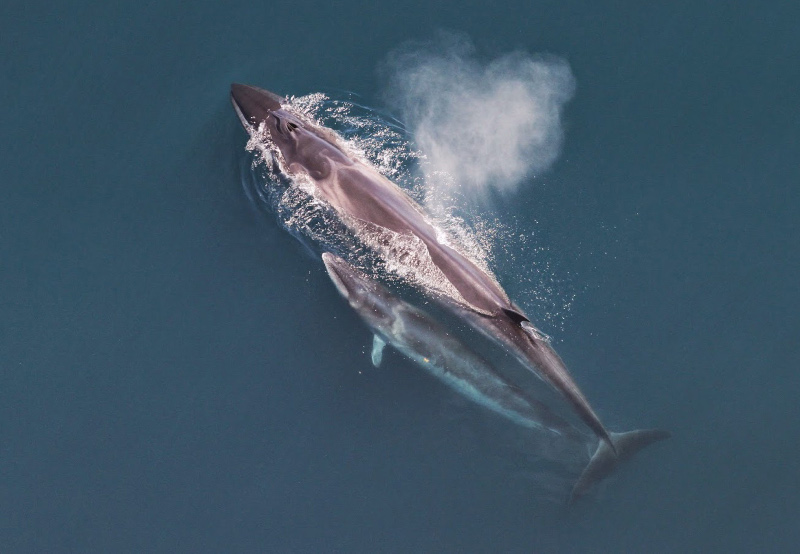
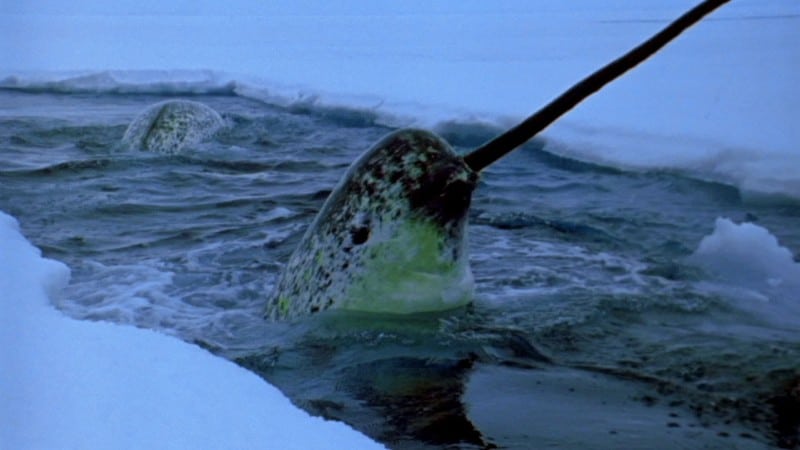
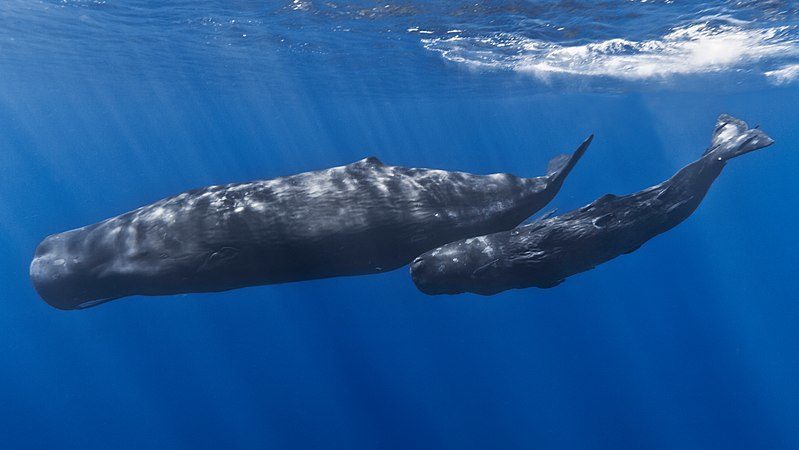
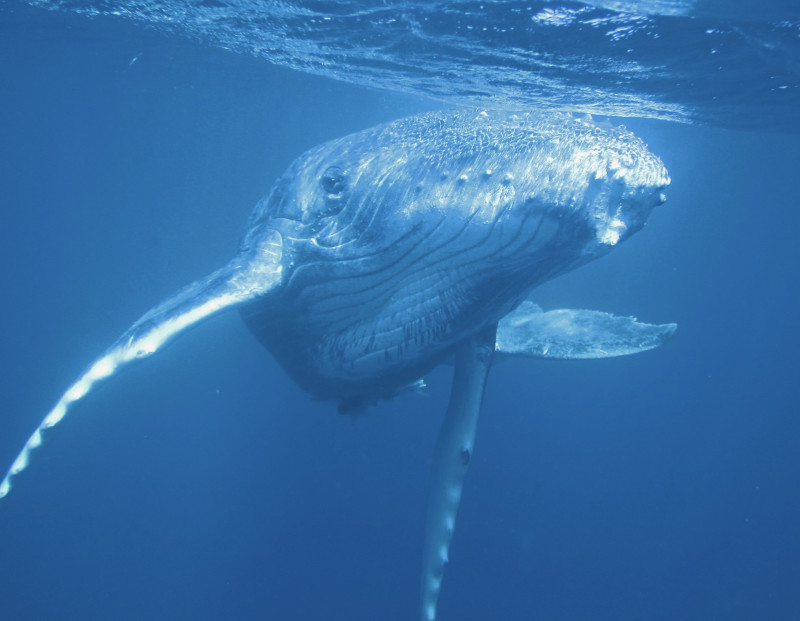
CCL: https://tinyurl.com/462rnnjn
Humpback Whale Physical Description
The remarkable Humpback Whale truly distinguishes itself from most of its numerous kindred across the marine waters of the world. It does so, however, for more than just its sheer visual appeal. The creature also earns merit due to the fact that it ranks as one of the larger of its kind.
In that regard, the animal also follows an evolutionary pattern common among many mammals. That’s shown by the fact that it displays a certain amount of the physiological characteristic of sexual dimorphism. In its case, this trait manifest itself in terms of pure physical dimensions.
More specifically, males of the species attain greater average measurements than their female counterparts. Overall, though, the difference remains comparatively minor. Adult males typically range from 46 – 49 ft (14 – 15 m) in length. Females average about 3 – 5 ft (0.9 – 1.5 m) less.
The marvel of Nature also has a highly distinctive body shape characterized by a relatively large, robust body with a small dorsal fin located far back on its body. Its pectoral fins additionally develop as quite long and paddle-shaped, making up about one-third of its total body length.
In color, the impressive cetacean also presents a very distinctive visual pattern. This consists of mostly black or dark gray on its upper side, while its lower side usually shows lighter, often white. The animal also sometimes shows slightly irregular white patches on its flippers, belly, and throat.
For some viewers, however, the head of the Humpback Whale marks yet another feature that sets it apart from its kin. It displays a large, knobbly head with an elongated jaw covered in small, wart-like bumps called tubercles. These contain hair follicles believed to aid in sensory perception.
Yet another characteristic feature of this amazing mammal’s the presence of multiple pleats or throat grooves along its ventral side. These numerous grooves allow the animal’s throat to expand during feeding, enabling it to take in large volumes of water and prey during the process.
- Kingdom: Animalia
- Phylum: Chordata
- Class: Mammalia
- Order: Artiodactyla
- Family: Balaenopteridae
- Genus: Megaptera
- Species: M. novaeangliae
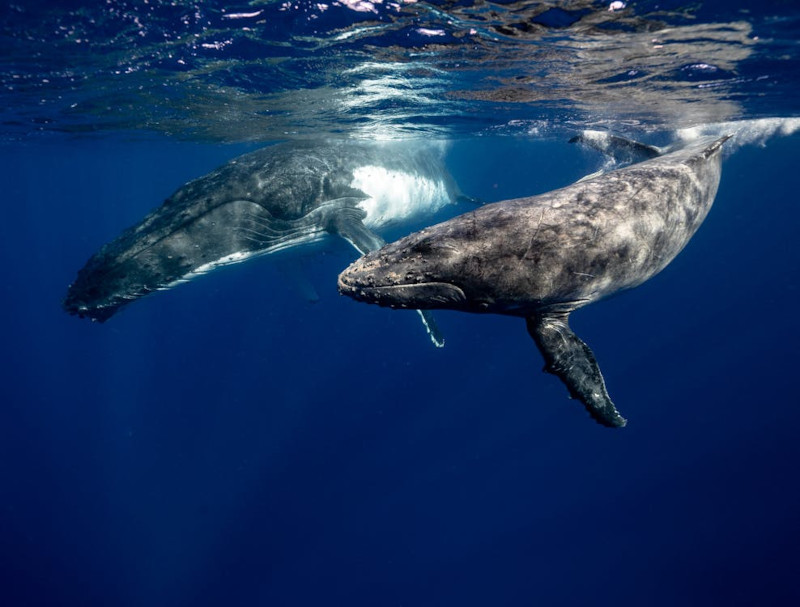
Humpback Whale Distribution, Habitat, and Ecology
Fortunately, the mighty Humpback Whale evolved naturally as endemic to an extraordinarily large expanse of the marine waters of the world. In fact, that natural zone of habitation consists of virtually all oceans and seas, with only a very few small, widely isolated exceptions.
Included among those comparatively rare places the mammal does not appear comes a handful of small enclosed seas. Somewhat understandably, however, it also does not live in the High Arctic areas. Intriguingly, though, it’s additionally absent from some regions situated near the equator.
Maintaining a pattern common to whales, this marvelous wonder of evolution displays decidedly strong flexibility regarding its choice of habitat. It’s therefore frequently found in an extremely wide variety of marine environments, including coastal waters, open ocean, fjords, and estuaries.
Yet, it’s also often observed near underwater features such as seamounts, submarine canyons, and continental shelves, where there’s increased prey abundance and more favorable oceanographic conditions. The animal further shows a strongly clear favoritism for much colder waters.
The amazing species feeds primarily as what’s known as a filter feeder. To that end, it uses baleen plates in its mouth to strain small prey such as krill, plankton, and small fish from the water. It also often feeds cooperatively, actually blowing bubbles, to trap the prey for easier feeding!
The Humpback Whale also undertakes amazingly long-distance migrations between its feeding and breeding grounds. These are driven by seasonal changes in temperature and prey availability. During migration, the whale travels thousands of miles, often following regular, predictable routes.
Breeding typically occurs in warmer waters during the winter months. Males engage in gently competitive behaviors such as singing and physical displays to attract the females. Mating itself typically produces a single calf, after an average gestation period lasting about 11-12 months.
Species Sharing Its Range


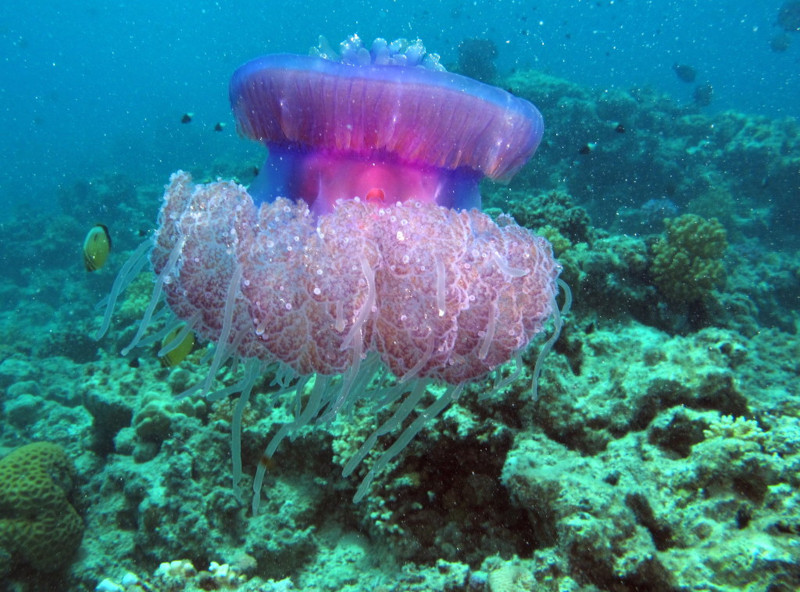
Check out our other articles on 5 Remarkable West Virginia Invertebrates, Clouded Leopard, Eurasian Griffin Vulture, Millaa Millaa Falls, Mountain Ebony, Old World Swallowtail, Orinoco Crocodile









Leave a Reply